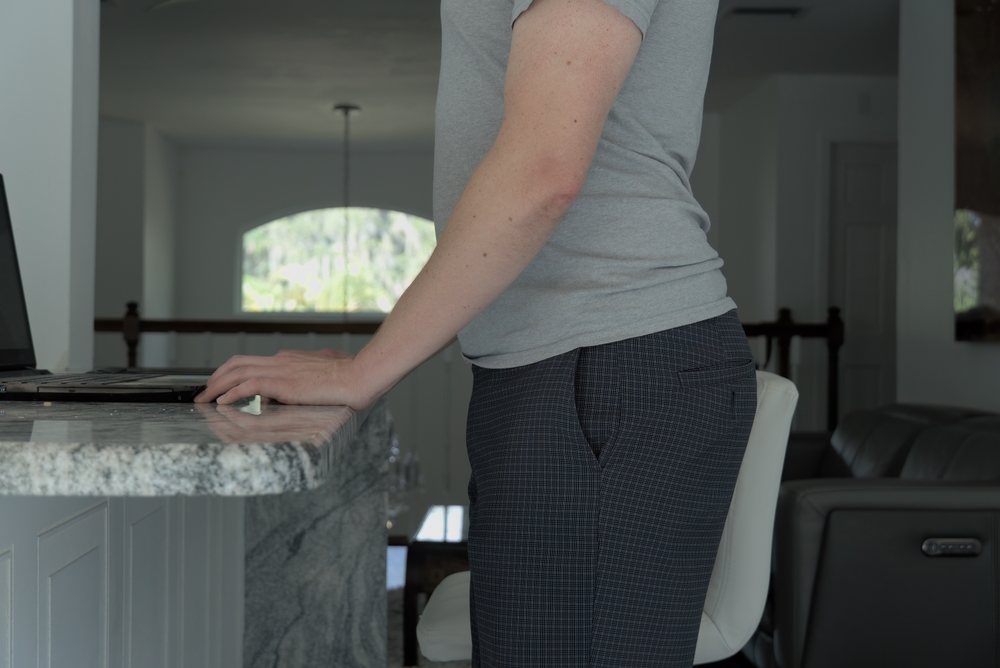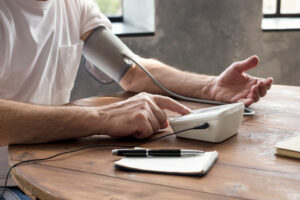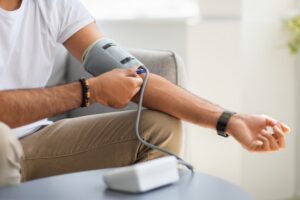If you struggle with persistent lower back pain, you may have heard of anterior pelvic tilt. But did you know this common postural issue is often linked to your feet? The connection between anterior pelvic tilt and foot problems is a critical, yet often overlooked, aspect of whole-body alignment. Many common anterior pelvic tilt symptoms, like lower backache and tight hamstrings, can actually originate from or be worsened by poor foot mechanics. Understanding this relationship is the key to finding effective, long-term relief from pain that extends far beyond your feet. Get a consultation with the best Podiatrists in Brooklyn.
What is an Anterior Pelvic Tilt?
Anterior pelvic tilt (APT) is a postural condition where the front of the pelvis rotates forward, and the back of the pelvis rises. This causes an exaggerated curve in the lower spine (lumbar lordosis), makes the abdomen protrude, and pushes the buttocks backward. It’s often the result of a modern, sedentary lifestyle, which leads to muscle imbalances—specifically, tight hip flexors and weak glutes, hamstrings, and abdominal muscles.
While a slight anterior tilt is normal, an excessive tilt can lead to a host of problems. One of the most common anterior pelvic tilt symptoms is chronic lower back pain, but the effects don’t stop there.
The Connection Between Anterior Pelvic Tilt and Foot Problems
The body is a kinetic chain, meaning that movement and alignment in one area directly affect others. Your posture doesn’t start at your hips; it starts from the ground up, with your feet.
How Foot Problems Can Cause Anterior Pelvic Tilt
The most common foot-related culprit is overpronation, which is often associated with flat feet. Here’s how it works:
- Feet Roll Inward (Overpronation): When someone with flat or unsupportive arches walks, their feet tend to collapse and roll inward.
- Lower Leg Rotates Internally: This inward rolling of the foot causes the lower leg (tibia) to rotate internally.
- Knee and Thigh Follow: The knee and thigh bone (femur) follow this inward rotation.
- Pelvis Tilts Forward: This internal rotation of the entire leg pulls on the hip joint, encouraging the pelvis to tilt forward into an anterior position to compensate.
Over time, this constant mechanical stress reinforces the muscle imbalances that define APT. Your body is essentially forced into this posture because of an unstable foundation.
How Anterior Pelvic Tilt Can Worsen Foot Problems
The relationship also works in the other direction. An existing anterior pelvic tilt, perhaps caused by a sedentary job, can alter your center of gravity. This shifts your body weight forward, placing excessive pressure on the front and inside of your feet. This can lead to or worsen conditions like:
- Plantar Fasciitis: Increased stress on the arch and heel.
- Bunions: Pressure on the big toe joint.
- Overpronation: The forward weight distribution can cause the arches to collapse further.
It becomes a vicious cycle where poor foot mechanics and poor hip posture continuously reinforce each other, leading to chronic pain.
Recognizing the Symptoms
It can be difficult to pinpoint the source of your pain. Besides the obvious postural signs (arched back, protruding stomach), here are some symptoms that suggest a link between your pelvis and your feet:
- Chronic lower back pain that has not responded to other treatments.
- Pain in your hips, knees, and ankles.
- Achy, tired feet, especially after standing or walking.
- Development of bunions, hammertoes, or plantar fasciitis.
- Uneven wear on the inside of your shoe soles.
The Importance of Professional Diagnosis and Management
If you suspect your pain is related to this complex issue, self-diagnosing and trying random stretches may not be effective. The key is to identify the primary driver of the problem—is it your feet causing the tilt, or the tilt causing the foot problems?
This is where an expert evaluation is crucial. A podiatrist is trained to analyze the biomechanics of your entire lower body, not just your feet. By performing a comprehensive gait analysis, a specialist can identify whether issues like overpronation are contributing to your postural problems.
A visit to a specialized podiatry clinic in Brooklyn can provide a clear diagnosis. A qualified podiatrist can determine if custom orthotics are needed to correct your foot mechanics. By creating a stable foundation with custom orthotics, you can:
- Control overpronation.
- Promote proper alignment of the leg.
- Reduce the rotational forces that pull the pelvis forward.
For many patients, addressing the feet is the missing piece of the puzzle. When combined with targeted stretching for hip flexors and strengthening for the core and glutes, correcting the foot posture can lead to significant improvements in pelvic alignment and a reduction in chronic pain.
Don’t let pain in one part of your body be dismissed as an isolated issue. If you’re struggling with anterior pelvic tilt symptoms and nagging foot pain, consider the connection. Seeking advice from a professional at a podiatry clinic in Brooklyn can help you address the root cause of your discomfort and restore balance to your entire body. At Doral Health & Wellness, we have Podiatrists with extensive education and expertise. Our address is 1797 Pitkin Avenue, New York, NY 11212. To make an appointment, please call + 1 718 367 2555, or register your information and make direct contact with us at https://yuz88hfiyh7.typeform.com/Doralintake or send an email to info@doralhw.org.






